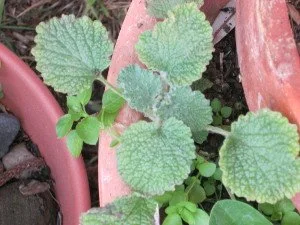Marrubium vulgare
LAMIACEAE
Common Horehound, White Horehound.
Native to South & West Europe, West & Central Asia & North Africa. Introduced into southern Australia as a medicinal herb in the early 19th century.
A perennial weed to >60cm high. With a deep taproot & fibrous lateral roots. Germination occurs throughout Winter & Spring. Common around sheep camps, rabbit warrens, roadsides, bushlands, disturbed sites & gardens.
Leaves are a grey green, wrinkled, with rounded tooth edges & a rounded tip, to 7cm long. Aromatic.
Small white flowers in clusters, grouped in the leaf & stem junctions, flowers throughout the year but particularly in Summer & Autumn. Flowers dry to form a burr like fruit with backward facing hooks. About 20 000 seeds per plant a year. Seeds are easily dispersed by clothing, machinery , wool, socks, fur & water. Seeds cause considerable reductions in wool value.
Horehound has been used in the past as a medicinal remedy for respiratory ailments. (Tastes YUK). Recent scientific studies conclude the essential oil possess antidiabetic & anti inflammatory properties.
Marrubium is also used as a natural grasshopper repellent.
Small infestations are best hand pulled before the plant matures the deep taproot. Herbicide is effective. Larger infestations require an extensive ongoing program. Care must be taken with seed dispersal via machinery & stock. An Autumn low intensity fire followed by revegetate with preferable perennial species. Regrowth may be more palatable to sheep & horses. Slashing annually before flowering may decrease the seed stock, although seed may remain viable for 7 years. Plume Moth biological control appears to be effective against re-emergent seedlings after herbicide treatment.

